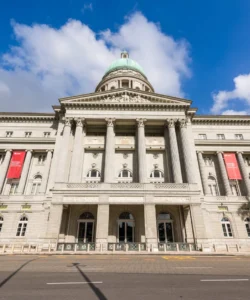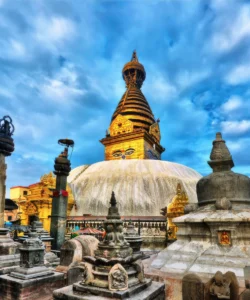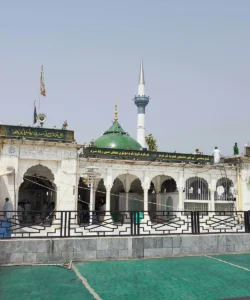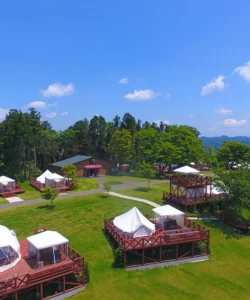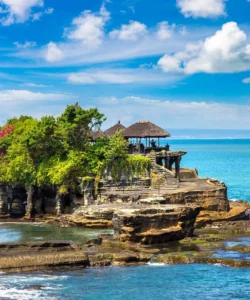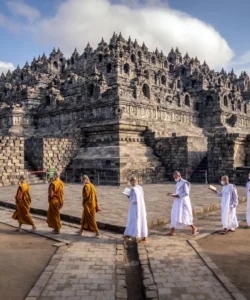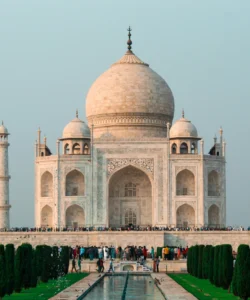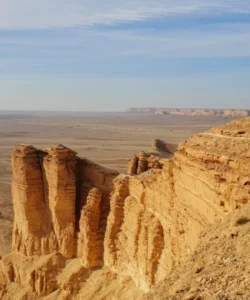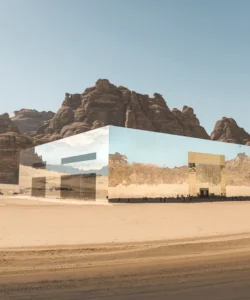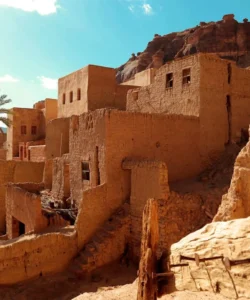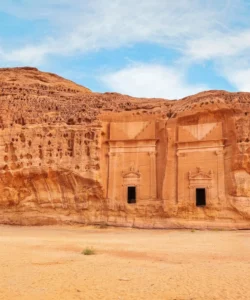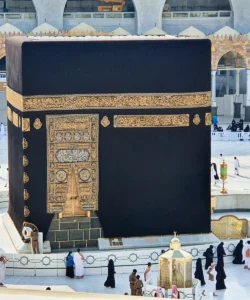Punakha Dzong, officially known as Pungtang Dewa Chhenbi Phodrang (meaning “the palace of great happiness or bliss”), is arguably the most magnificent and historically significant fortress-monastery in Bhutan. Its breathtaking location, intricate architecture, and profound spiritual and political importance make it a quintessential Bhutanese wonder.
Name: Punakha Dzong (Dzongkha: སྤ་ན་ཁ་རྫོང་; also Pungtang Dewa Chhenbi Phodrang)
Address: Punakha Valley, Punakha District, Bhutan. It is strategically situated at the confluence of the Pho Chhu (Male River) and Mo Chhu (Female River), creating a naturally fortified and incredibly picturesque setting.
How to Get There:
All foreign visitors (except those from India, Bangladesh, and the Maldives) must arrange their travel to Bhutan through a licensed Bhutanese tour operator, which includes all transportation.
- By Air to Paro (PBH): International travelers typically fly into Paro International Airport (PBH), Bhutan’s only international airport.
- From Paro to Punakha: Punakha Dzong is about 124 kilometers (77 miles) from Paro and takes approximately 3.5 to 4 hours by car, depending on road conditions. The drive is scenic, crossing the Dochu La pass, which offers stunning panoramic views of the Himalayas on a clear day.
- From Thimphu to Punakha: Punakha is approximately 72 kilometers (45 miles) from Thimphu, the capital, taking about 2 to 3 hours by car, also crossing the Dochu La Pass.
- By Road within Bhutan: Licensed Bhutanese tour operators provide private vehicles and drivers for all internal travel. Regular bus services are also available from major cities like Thimphu and Paro to Punakha, offering a more economical but less flexible option.
- To the Dzong Entrance: Access to the dzong is across the Bazam Bridge, a traditional cantilever bridge rebuilt in 2008 after floods. This bridge connects the dzong to the mainland.
- Entrance Fee: There is an entrance fee for Punakha Dzong (currently around Nu 500 per person for foreigners).
- Dress Code: As a sacred site, modest dress is required (shoulders and knees covered for both men and women). Footwear must be removed in certain areas, particularly inside temples.
- Best Time to Visit: The dzong is particularly enchanting in spring (March to May) when the beautiful lilac-colored Jacaranda trees (which bloom in its courtyards) are in full bloom, adding a lush sensuality to its whitewashed walls. Autumn (September to November) also offers clear skies and pleasant weather. Punakha is generally warmer than Thimphu in winter.
Landscape and Architecture:
Punakha Dzong is a masterpiece of Bhutanese architecture, ingeniously blending defensive design with spiritual grandeur and a deep connection to its natural environment.
- Confluence of Rivers: Its most striking and strategic geographical feature is its location at the confluence of the Pho Chhu (Male River) and Mo Chhu (Female River). This natural moat provides exceptional defense and a picturesque setting, with the rivers often reflecting the dzong’s majestic walls.
- Massive, Whitewashed Walls: The dzong is characterized by its massive, inward-sloping whitewashed walls, built from compacted earth, stone, and timber. These imposing walls, which can be several meters thick at the base, exemplify traditional Bhutanese fortress architecture designed for defense.
- Construction Without Nails: Like other traditional Bhutanese structures, Punakha Dzong was constructed without the use of iron nails, relying on intricate traditional joinery techniques using interlocking stones and wooden beams, a testament to ancient craftsmanship.
- Three Courtyards (Docheys): Punakha Dzong is unusual in that it has three ‘Docheys’ (courtyards) instead of the usual two found in most other dzongs. Each courtyard serves a different function:
- First Courtyard (Northern): Used for administrative functions, housing government offices. It features a huge white Victory Chorten and a sacred Bodhi tree.
- Second Courtyard (Central): Located between the administrative and monastic sections.
- Third Courtyard (Southern): Dedicated to the monastic body, containing the main assembly hall (Kunrey) and sacred temples.
- Central Tower (Utse): A six-story central tower (Utse) houses the most sacred relics in the country, including the ‘Rangjung Kasarpani’ (a self-created image of Avalokiteshvara) and the embalmed remains of Zhabdrung Ngawang Namgyal (the unifier of Bhutan).
- Elaborate Woodwork and Murals: The interior and covered parts of the dzong are adorned with intricate woodwork, including beautifully carved and painted pillars, windows, and doors. The walls of the assembly halls feature exceptional murals depicting scenes from the life of the Buddha, commissioned by the second Druk Desi. Large gilded statues of the Buddha, Guru Rinpoche, and Zhabdrung are found within the temples.
- Steep Wooden Staircases: The main entry features steep wooden staircases that were ingeniously designed to be retracted or pulled up during times of war, making the dzong virtually impenetrable. A heavy wooden door is still closed at night.
- Jacaranda Trees: In spring, the courtyards are famed for their beautiful lilac-colored Jacaranda trees, which create a stunning contrast with the dzong’s whitewashed walls and vibrant blossoms.
- Bazam Bridge: The iconic traditional cantilever bridge (Bazam Bridge) leading to the dzong is a marvel of ancient engineering, rebuilt in the traditional style.
What Makes It Famous:
- “Palace of Great Happiness”: Its official name and the general atmosphere it evokes contribute to its fame as a place of spiritual bliss and beauty.
- Second Oldest and Second Largest Dzong: Built in 1637-38 by Zhabdrung Ngawang Namgyal, Punakha Dzong is the second oldest and second largest dzong in Bhutan, signifying its historical and architectural importance.
- Historical Capital of Bhutan: It served as the capital of Bhutan for over 300 years until 1955 and remains the winter residence of the Je Khenpo (Chief Abbot of Bhutan) and the Central Monastic Body (Zhung Dratshang).
- Royal Significance: Punakha Dzong holds immense royal significance. All of Bhutan’s kings have been crowned here, including the coronation of the first Druk Gyalpo (King) Ugyen Wangchuck in 1907 and the present King Jigme Khesar Namgyel Wangchuck in 2008. It was also the venue for the royal wedding of the fifth King and Queen Jetsun Pema in 2011.
- Sacred Relics: It houses the most sacred relics in the country, notably the ‘Rangjung Kasarpani’ and the embalmed remains of Zhabdrung Ngawang Namgyal, making it a pivotal spiritual center.
- Strategic and Picturesque Location: Its unique setting at the confluence of two rivers, surrounded by stunning natural beauty, makes it one of the most picturesque dzongs in Bhutan, highly favored by photographers.
- Punakha Dromchen Festival: The dzong is the venue for the annual Punakha Dromchen, a unique festival that reenacts a 17th-century battle against the Tibetan army, a powerful cultural spectacle.
Differences from Some Other Wonders (especially other Dzongs in Bhutan):
- River Confluence Location: While many dzongs are strategically located on hilltops or ridges (like Trongsa Dzong or Paro Dzong), Punakha Dzong’s defining feature is its location at the confluence of two major rivers (Pho Chhu and Mo Chhu). This specific riverine setting, creating a natural defensive moat and allowing for its iconic reflections, sets it apart.
- Three Courtyards: Punakha Dzong uniquely features three main courtyards (Docheys), unlike the more common two found in most other dzongs. This expanded layout caters to its dual administrative and monastic functions.
- Historical Capital and Coronation Venue: While other dzongs have historical significance, Punakha Dzong served as Bhutan’s capital for over three centuries and has been the coronation venue for all of Bhutan’s kings. This direct and continuous link to the highest office of the land gives it unparalleled political and royal historical weight.
- Winter Residence of the Chief Abbot: It functions as the winter residence for the Je Khenpo (Chief Abbot) and the central monastic body, highlighting its enduring religious importance and seasonal migration.
- Jacaranda Blooms: In spring, the lilac-colored Jacaranda trees blooming within its courtyards offer a visually distinctive and exceptionally beautiful contrast to the dzong’s white walls, a famous seasonal feature.
- Sacred Relic of Zhabdrung’s Embalmed Body: The preservation of the sacred embalmed body of Zhabdrung Ngawang Namgyal, the unifier of Bhutan, and the spiritual rituals associated with it, are unique to Punakha Dzong, bestowing upon it an exceptionally high level of spiritual sanctity.
- Cantilever Bridge as Primary Access: The traditional cantilever bridge (Bazam Bridge) that provides the sole pedestrian access to the dzong is a significant architectural and experiential element.
Punakha Dzong Photos:
[envira-gallery id=”17147″]

